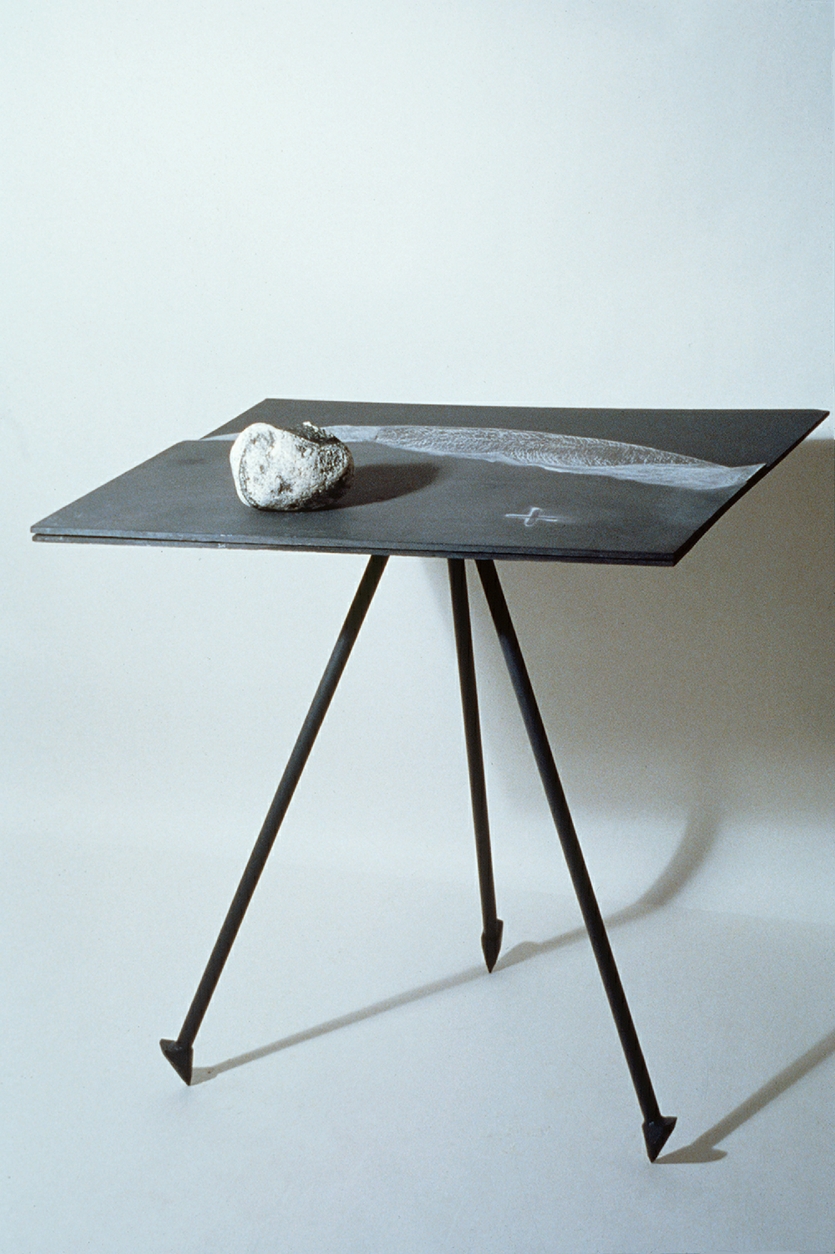Plane Tables
The surveyor’s plane table, where lines can be plotted directly from observation, has replaced my easel. I have surfaced them with fragments of old slate blackboards, and the two previous incarnations of this material inform the meaning of the work. As excavated layers of ancient landscape, the slate restates the flat landform of the American prairie. As blackboard, temporary repository of information, its surface is mutable like that of the land. These ‘blank’ slates become the background on which I place found pieces of information I associate with environmental issues.
Susan Fiene
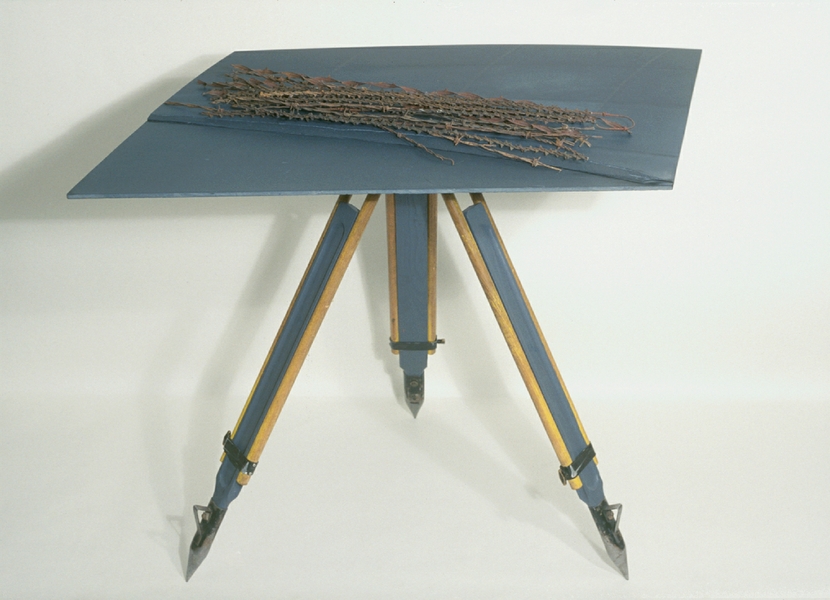
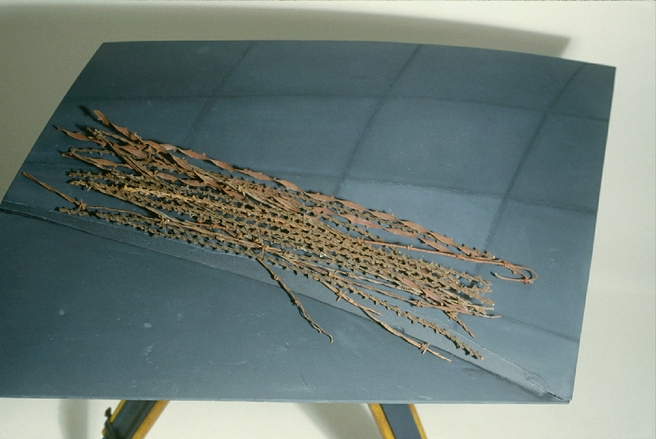
In the post-
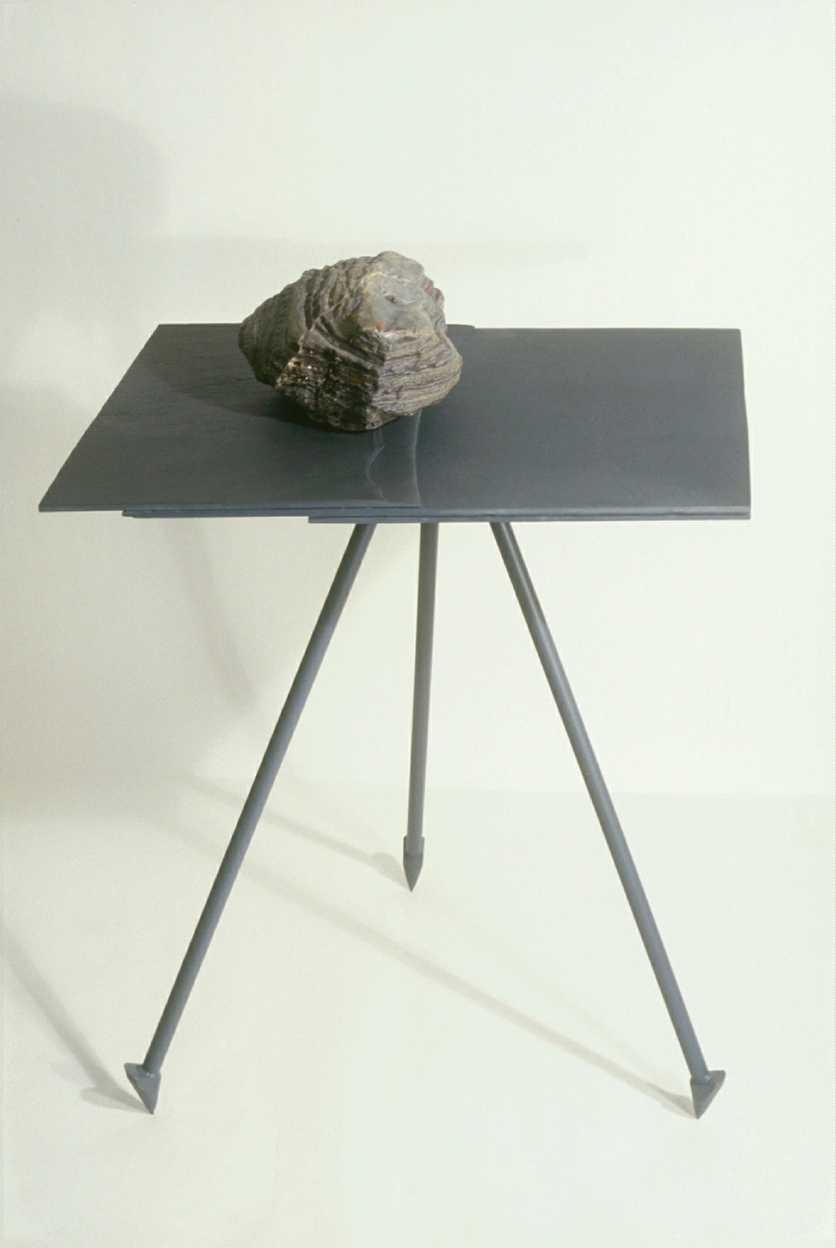
Revealed in the sedimentary layers, this ancient glacial stone was folded during some geological upheaval. The tenuous balance of the stone on the plane table represents ecological relationships.
![]()
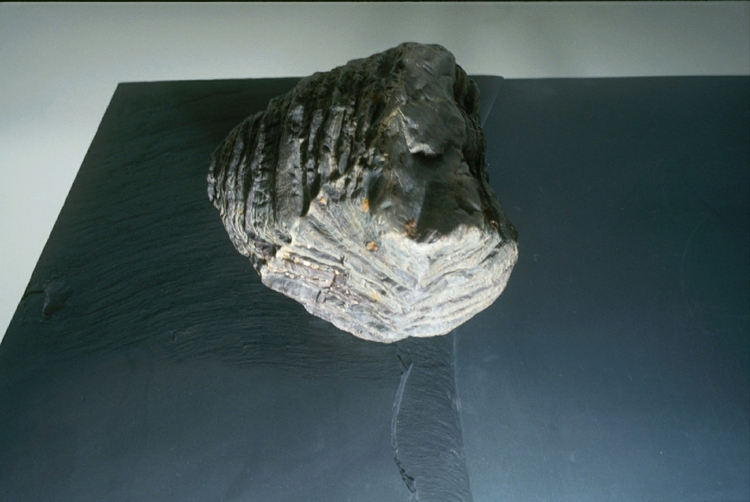
text element:
The Second Coming W.B. Yates
Turning and turning in the widening gyre
The falcon cannot hear the falconer;
Things fall apart; the centre cannot hold;
Mere anarchy is loosed upon the world,
The blood-
The ceremony of innocence is drowned;
The best lack all conviction, while the worst
Are full of passionate intensity.
Surely some revelation is at hand;
Surely the Second Coming is at hand.
The Second Coming! Hardly are those words out
When a vast image out of Spiritus Mundi
Troubles my sight: somewhere in sands of the desert
A shape with lion body and the head of a man,
A gaze blank and pitiless as the sun,
Is moving its slow thighs, while all about it
Reel shadows of the indignant desert birds.
The darkness drops again; but now I know
That twenty centuries of stony sleep
Were vexed to nightmare by a rocking cradle,
And what rough beast, its hour come round at last,
Slouches towards Bethlehem to be born?
text element:
Black Elk’s Vision
I was still on my bay horse and once more I felt the riders of the west, the north, the east and the south behind me in formation, and we were going east. Then I was standing on the highest mountain of them all, and around and beneath me was the whole hoop of the world. And while I stood there I saw more than I can tell and I understood more than I saw; for I was seeing in a sacred manner the shapes of all things of the spirit, and the shape of all shapes as they must live together like one being. And I saw the sacred hoop of my people was one of many hoops that made one circle, wide as daylight and as starlight, and in the center grew one mighty flowering tree to shelter all the children of one mother and one father. And I saw it was holy.

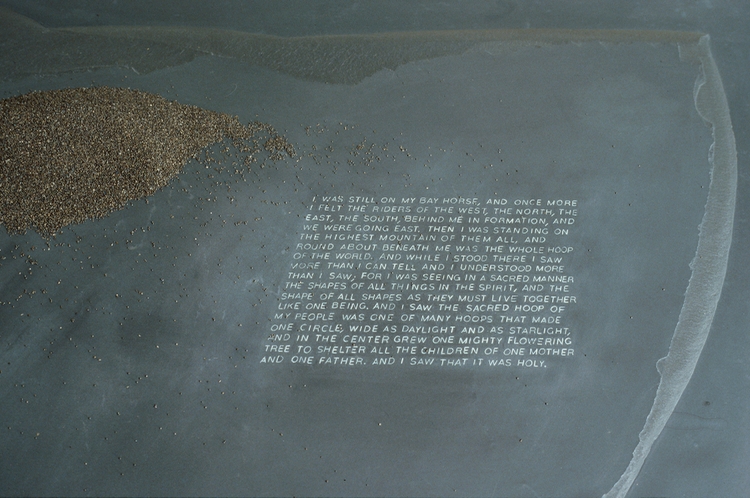
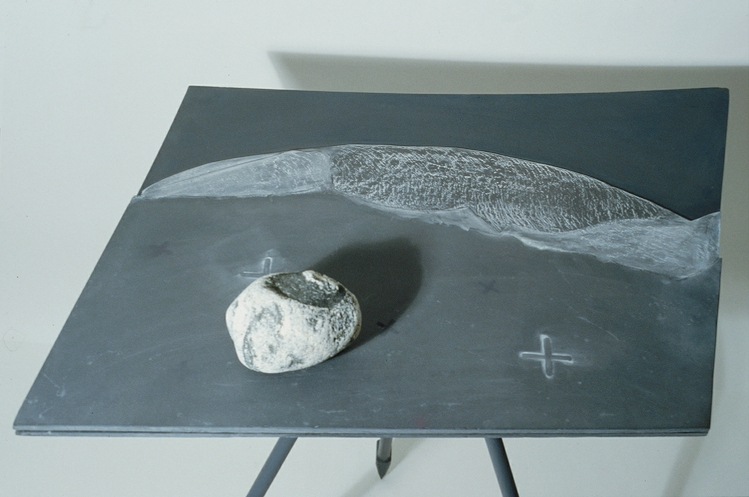
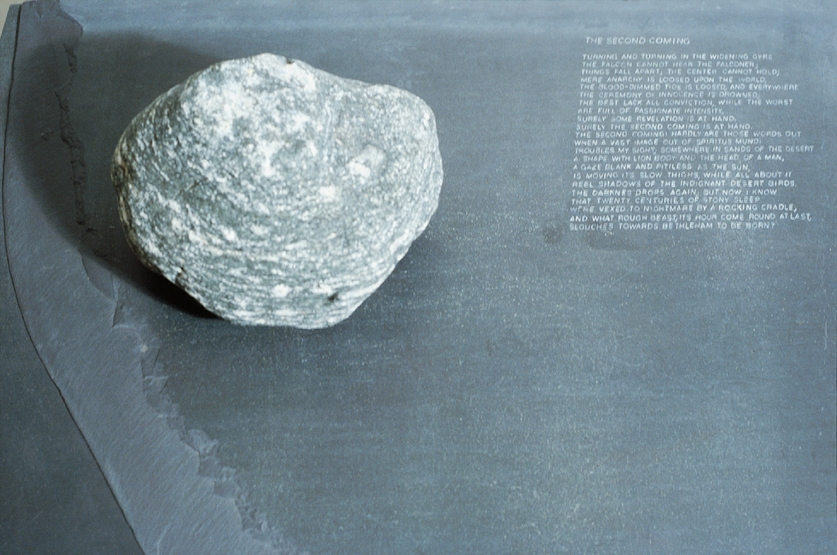
The slate in this piece fractured in a way that reminded me of a lunar landscape. The Navajo used ‘plus signs’ to mark stars on astronomical maps drawn on the ceilings of caves. These marks are similar to registration marks on lunar satellite photographs.
